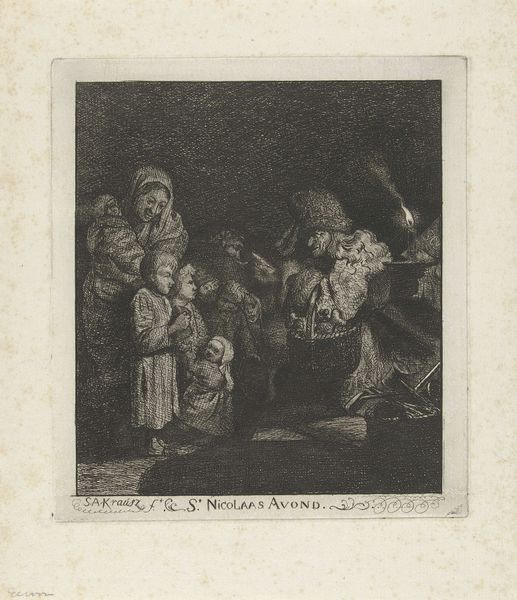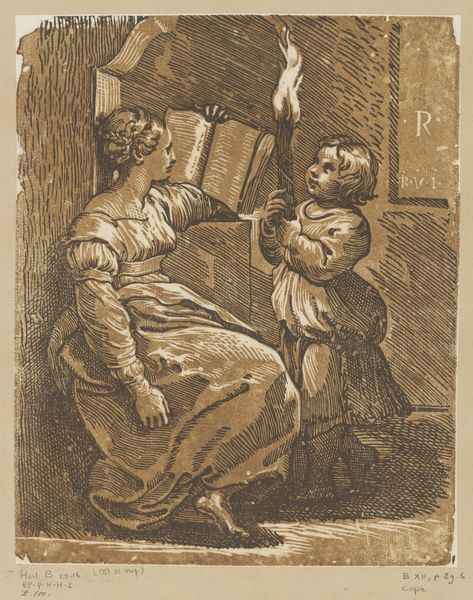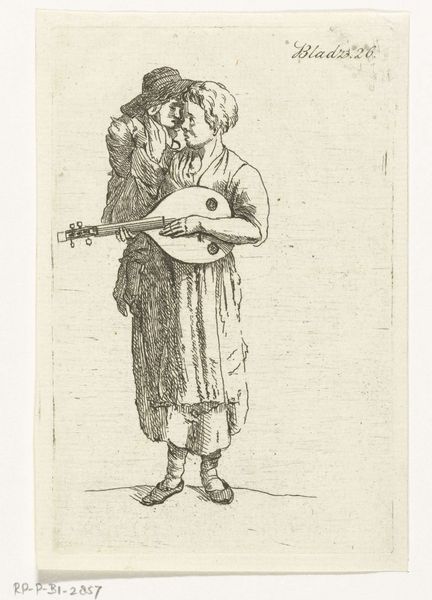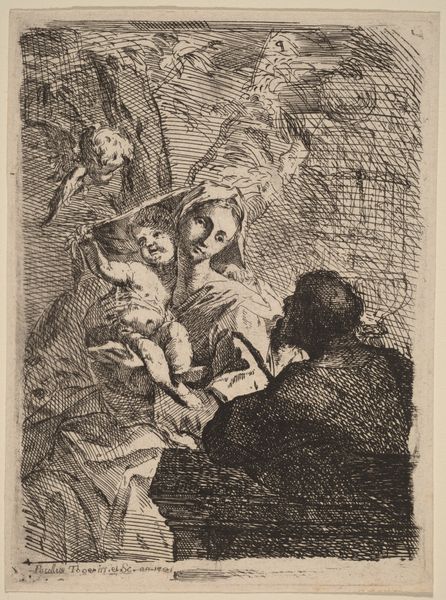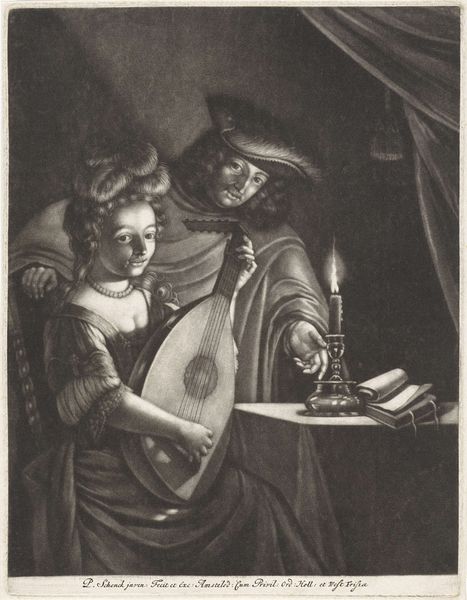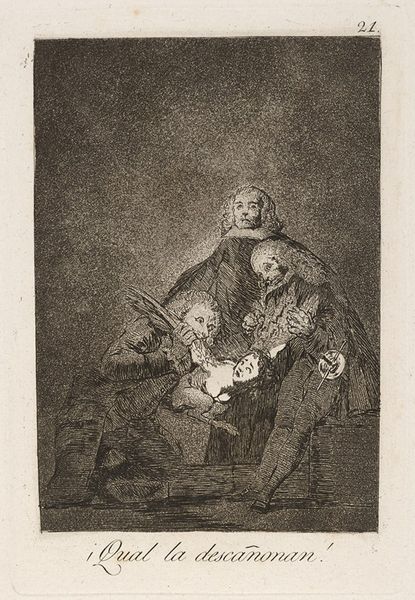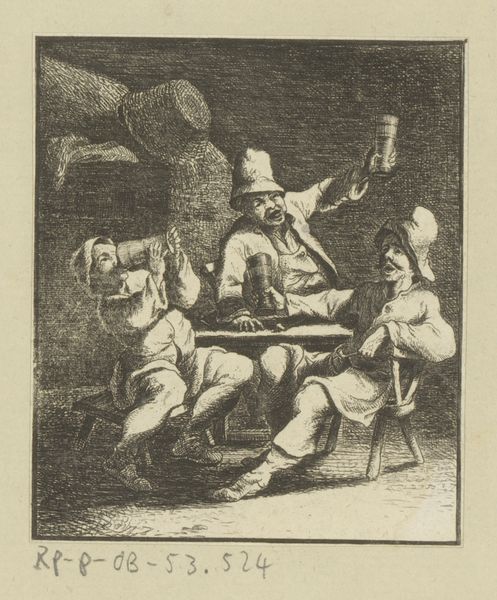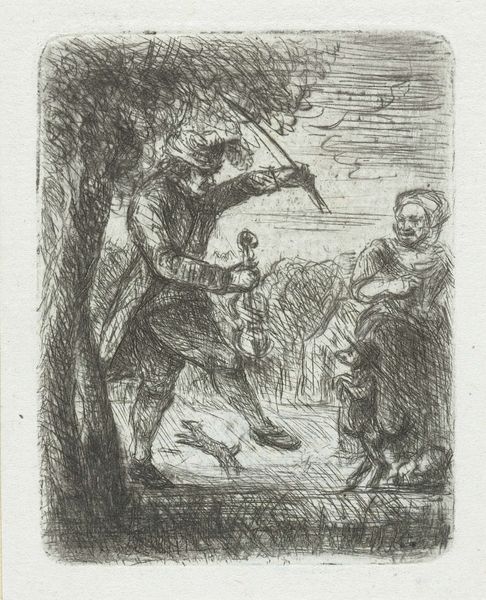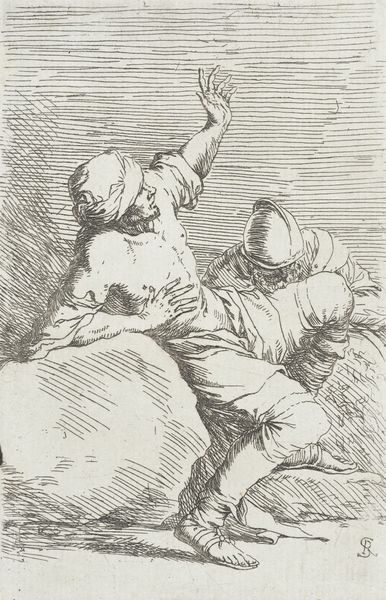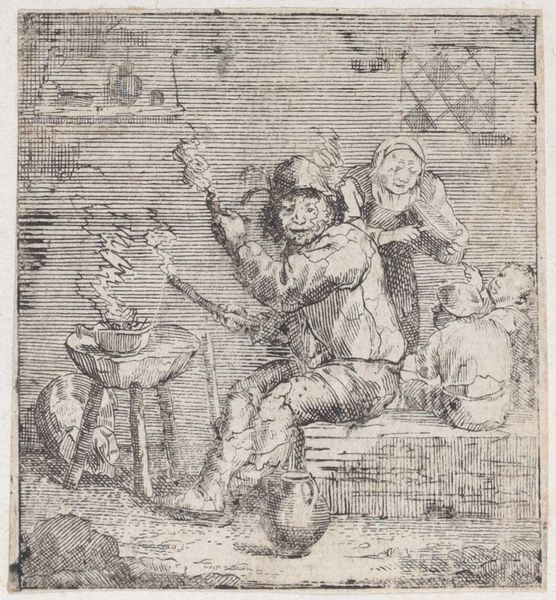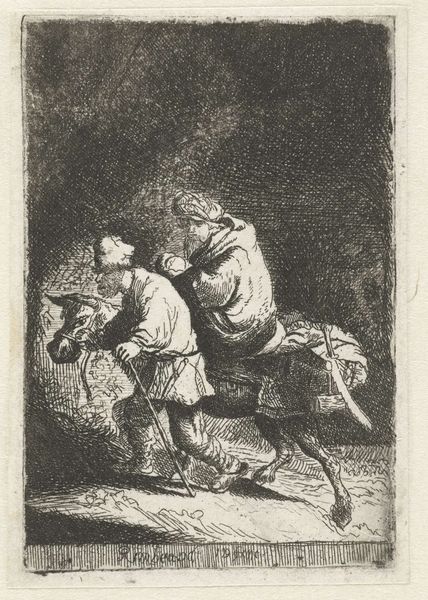
drawing, print, etching
#
portrait
#
drawing
# print
#
etching
#
figuration
#
pencil drawing
#
genre-painting
#
realism
Dimensions: 7-1/4 x 5-5/16 in. (18.4 x 13.5 cm)
Copyright: Public Domain
Curator: Today, we’re examining Leonardo Alenza’s print, "They Spin Well," created between 1807 and 1845. The image is currently held in the collection of the Metropolitan Museum of Art. Editor: There’s a grimness here. The two figures dominate the composition. Everything else seems secondary—sketchy and unfinished in comparison. It definitely catches the eye with its sharp lines and raw energy. Curator: Indeed. Alenza uses etching to present us with these two women engaged in the act of spinning. The detailed cross-hatching that models their faces is quite remarkable, considering that it is just a simple print, but one that gives substance to their visages and humble occupation. We cannot escape the details and care put into representing these laborers and their tasks. Editor: It's that detailed focus on their labor that intrigues me. I wonder what fibers they are processing—wool or perhaps flax? Notice the spindle and distaff each holds: they’re elemental technologies central to the history of textile production. There's an almost reverence to these devices rendered through close visual and detailed representation. Curator: I’d argue Alenza's intent transcends mere documentation of their craft. Observe how their gazes intersect, creating a triangle, with the implicit text at the lower register of the print further stabilizing that focal element, leading us, perhaps, to the inherent value in portraying the ordinary. Their realism subverts, say, classic academic hierarchy in painting, yet remains deeply referential to traditional form through rigorous, almost geometric composition. Editor: But consider how accessible this piece becomes through printmaking. Alenza distributes not only an image, but an act of rebellion against established aesthetic hierarchies. Each impression is itself a material iteration and re-evaluation of labor—a conceptual thread connecting artist, spinner, and the consumer. Curator: A fascinating interpretation—however, for me, its lasting effect dwells on the image, which lingers as a profound study of contrast, balancing form with light—a quiet assertion against formal structures within and beyond its depicted subjects. Editor: Perhaps—but its material genesis keeps drawing me back. I still cannot decide which point of view wins out over the other.
Comments
No comments
Be the first to comment and join the conversation on the ultimate creative platform.

